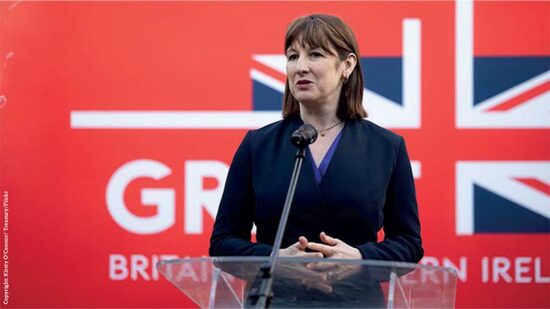Both the Schroders Dynamic Planner range of managed funds and the AJ Bell active managed portfolio service have increased exposure to absolute return strategies in recent months rather than plump for bricks and mortar.
The Schroders Dynamic Planner range, launched in December last year, uses Distribution Technology’s strategic asset allocation as its benchmark which allows for an 8% weighting to property in Schroders’ level 3 portfolio and 5% in its level 7 offering.
However, as Joe Le Jéhan, a member of the Schroders multi-manager team, explains, since launch the range has never had exposure to property, preferring to use this designated allocation for absolute return strategies.
“If you look at the Dynamic Planner asset allocation there is property in it, but when we launched these funds we decided not to put in any property and put it into absolute return,” he says. “This is down to a combination of wanting to be in absolute return and not wanting to be in property.”
Against property
So what does he have against good old fashioned bricks and mortar? Le Jéhan and the Schroders team believe property is highly correlated to fixed income which is not desirable in a rising rate environment.
“This idea that inflation is bubbling up means at some point interest rates are going to move up, which is not good for bonds and property, and they are acting in a similar manner. That is our overriding caution,” he says.
Another reason is concern over the mismatch in liquidity between property funds and client portfolios.
“These are daily-dealing funds we are running for clients, but with property you cannot go and sell in one day. The fund itself might be daily dealing but the underlying asset is not. Post the Brexit vote, funds had to lock investors in and that can happen.”
This is a worry for the team, particularly if volatility picks up and investors run for the door again. “Volatility is up and we think it is here to stay, so that is another consideration,” he adds.
Thomas Wells, multi-asset fund manager at Aviva Investors, responsible for the firm’s Multi-asset funds (Maf) multi-manager range, shares Le Jéhan’s worry over liquidity. The Maf portfolios have no property exposure at the moment but are allocated to absolute return. Wells says this is because of the liquidity issues in property and because he believes valuations have got ahead of themselves, particularly in central London office space.
He explains: “Having direct property exposure makes sense for wealth managers who have clients with individual portfolios, but for us because we are a daily-traded and daily-priced fund and offer daily liquidity, it is very important the asset classes we invest in have a similar liquidity profile.
“I am very conscious that unlisted property is not very liquid, so from a strategic structural perspective I am wary of having less liquid asset classes.”
Similarly, Ryan Hughes, head of fund selection at AJ Bell, has also opted for zero exposure to physical property for the firm’s recently-launched active managed portfolio range, preferring to use the allocation for absolute return strategies.
Hughes, however, is anti-physical property because of the potential impact of the struggling UK economy amid ongoing Brexit uncertainty on the sector. He has some exposure through Reits.
He also views the increased cash levels in certain funds as a hindrance on returns.
He says: “We are not keen on buying physical property at this point in the cycle when you have got funds that are running excess liquidity for managing flow purposes, up to 25% cash, and high costs in them and managers expecting returns to be more muted for the next three years.”
Why absolute return?
The Schroders team seeks different asset classes that move in different ways to give diversification, so if equities go down there is something else in the portfolio that protects capital. This is where absolute return comes into play.
The Dynamic Planner range uses Morgan Stanley Global Multi Asset Opps which Le Jéhan says has had a tough couple of years because of its bearish view on asset markets, but is in the portfolio in case equity markets wobble. In March when most equity markets were down it was up about 1.5%, according to Le Jéhan.
It also uses the Jupiter Absolute Return fund which Le Jéhan notes tends to be long value and short growth on the premise that if inflation kicks in, the long book should do well and the growth stocks should suffer.
“In a time when volatility picks up then we think those hedge fund/absolute return strategies are really important,” says Le Jéhan.
AJ Bell’s Hughes has blended the M&G Absolute Return Fixed Income fund with the Janus Henderson UK Absolute Return Long Short Equity fund which in combination, he believes should give similar volatility characteristics to property over time – and diversification.
“We wanted something that would bring diversifying characteristics away from traditional equities and fixed income and give us that lower risk/return profile,” he says.
That said, Hughes still has an open mind on property, saying if physical and commercial property starts to look more attractive and the economic environment changes, it is something AJ Bell would look to move into.
The Aviva Investors Maf range uses the firm’s internal Aviva Investors multi-strategy (Aims) Target Return and Fixed Income funds for exposure to absolute return.
Wells says the fixed income fund is up about “one-and-a-bit percent” this year which given fixed income is down across the board “is a pretty good outcome”.
“We like the fact it can help protect portfolios in challenging market conditions for bonds,” he adds.

A different picture
Interestingly, the flows and performance paint a different picture. Latest IA statistics show property was the third best-selling sector in February with net retail sales of £94m whereas the Targeted Absolute Return sector experienced a net retail outflow of £147.5m.
In March, IA Property was the third best performing sector with a return of 0.64% while the Targeted Absolute Return sector was the 10th best-performing, producing -0.61% over the month.
The Aberdeen Property Share fund was the only member of the top 10 best-performing funds in March that wasn’t a gilt or bond fund.
“Property has long been a diversifier from equities and offers some natural protection against volatile markets, particularly where the focus is on good quality tenants and a long term stable income stream,” says Architas investment director Adrian Lowcock.

Apples with oranges
But Wells does not think UK property is comparable to absolute return because it is infrequently priced which makes its returns seem artificially smoothed.
“[Property funds] are riskier than they seem because property is less frequently priced,” he says. “If a fund gets valued twice a year and in between there is little fluctuation, it does not seem volatile, unlike an equity market that gets revalued daily so the volatility seems higher. Some people would mistakenly say this lower perceived volatility means it is lower risk versus equities.”
He adds: “If you look at the performance of UK commercial property it is pro-cyclical; it does well when the UK economy does well and badly when it is does badly, and 2008 was a good example of that.”
However, as Le Jéhan says, the absolute return sector is a broad church of funds, some of which have heavy allocations to equities. The key to picking an absolute return fund is to look for those uncorrelated to equities.
“There are lots of absolute return funds and it is a bit of a catch-all phrase and some are correlated to equities, but what we are looking for are things that give us a bit of upside when equities fall,” he says.
“If you put together a portfolio, you want different asset classes that move in different ways to give diversification, so if equities go down maybe you have something else that protects capital on the other side.”
Indeed, the perils of holding too many equities in a multi-asset vehicle were brought to light recently as several high-profile strategic bond funds with high exposure to equities have fallen from top to bottom quartile in the year to date as volatility increased.
Comparing absolute return and property is in many ways like comparing apples with oranges because absolute return’s raison d’être is targeting a positive return in all market conditions and the weighting of different asset classes under the bonnet varies immensely across the board.
Property meanwhile, is often more of an income story and more susceptible to market cycles.
Investors have to understand exactly what each offering does for the portfolio in the prevailing economic backdrop.








